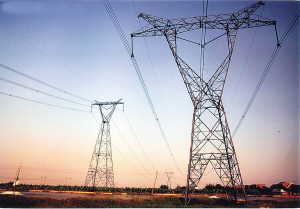 2%, 40%, and now 8%, China's renewable energy price surcharge on electricity per kWh is rising steadily. According to incomplete statistics, in 2009, the gap in the national subsidy for renewable energy tariff was 1.3 billion. In 2010, the gap was 2 billion. By 2011, the gap has reached more than 10 billion. Up to now, the new energy subsidy that cannot be implemented is estimated to have 134.3 billion yuan. In 2012, the funding gap for PV subsidy should be 5-6 billion yuan. Thus, even if it does not count biomass power generation subsidies, there are still about 20 billion new energy subsidies in the country.
2%, 40%, and now 8%, China's renewable energy price surcharge on electricity per kWh is rising steadily. According to incomplete statistics, in 2009, the gap in the national subsidy for renewable energy tariff was 1.3 billion. In 2010, the gap was 2 billion. By 2011, the gap has reached more than 10 billion. Up to now, the new energy subsidy that cannot be implemented is estimated to have 134.3 billion yuan. In 2012, the funding gap for PV subsidy should be 5-6 billion yuan. Thus, even if it does not count biomass power generation subsidies, there are still about 20 billion new energy subsidies in the country. 10 billion loopholes
The additional cost of electricity tariffs imposed on ordinary electricity companies and households is currently the only source of funds for subsidizing renewable energy on-grid power generation in China. This fee began in 2006 and was initially 2 cents per kilowatt hour. When the electricity price was raised in November 2009, the renewable energy price addition was also adjusted to 4%.
In fact, as early as in 2009, the relevant departments discovered that the surcharge on electricity prices was not enough to subsidize new energy power generation companies. Some companies have become increasingly prominent when they have finished sending out their electricity subsidies. Even the new energy-generating central enterprises are facing a lot of subsidies. The approach taken at that time was to divert the additional price of electricity levied in the next year to subsidy of the previous year's outstanding bills; at the same time, brewing further to raise the surcharge standard for electricity prices, that is, to further raise the tariff. At present, several ministries and commissions are making basic statistics on the enterprises that should receive subsidies throughout the country. It is estimated that there are billions of loopholes. Officials of the National Energy Administration said, “To figure out how much subsidies should be owed, how much should be made, and how many companies did not receive subsidies.†In fact, even so far, relevant departments have never disclosed this pair of ordinary people. Residents have continuously collected 7 years of additional electricity income and expenditure.
Local affairs, central money
In recent years, the development of China's new energy has gone far beyond the original plan of the regulators at the time of planning. Subsidies for new energy power companies have also risen. In fact, when the renewable energy price surcharges were raised three times in 2008, 2009, and 2011, the relevant agencies had already estimated the nation’s future new energy production. According to the estimates, after the standard was raised, the annual price increase was added. It is affordable. However, subsidy loopholes still appear year after year, and continue to increase.
In recent years, in order to encourage the development of renewable energy industry, China has implemented various economic incentive policies, such as tax relief, price concessions, investment subsidies and so on. Since 2006, state-owned enterprises and privately-owned enterprises have rushed around and set off a storm of investment in wind power. However, some successful bidders often lose their projects because they don't have any profit. In some areas, investment in wind power is only a combination of installed capacity, but it does not consider the amount of electricity on the grid. Officials of the National Energy Administration stated that “it is growing so fast that it cannot be controlled, and it has now fully developed beyond expectationsâ€.
The investment in new energy resources has also begun in various places. It also resulted from the decision of the State Council to decentralize investment authority and carry out investment system reforms in 2004. The photovoltaic industry and the biomass energy industry are all new stars. They were not listed in the investment project list at that time and had long been prepared by local nuclear authorities. The officials of the National Energy Administration said that “the authority for project approval is in place, and the authority for subsidy is again in the center. This is the local government. The central government pays for the money. The local government must engage in GDP, get a lot of new energy projects, and squeeze money for money. Where there is So much money?"
Ningbo Autrends International Trade Co.,Ltd. , https://www.supermosvape.com